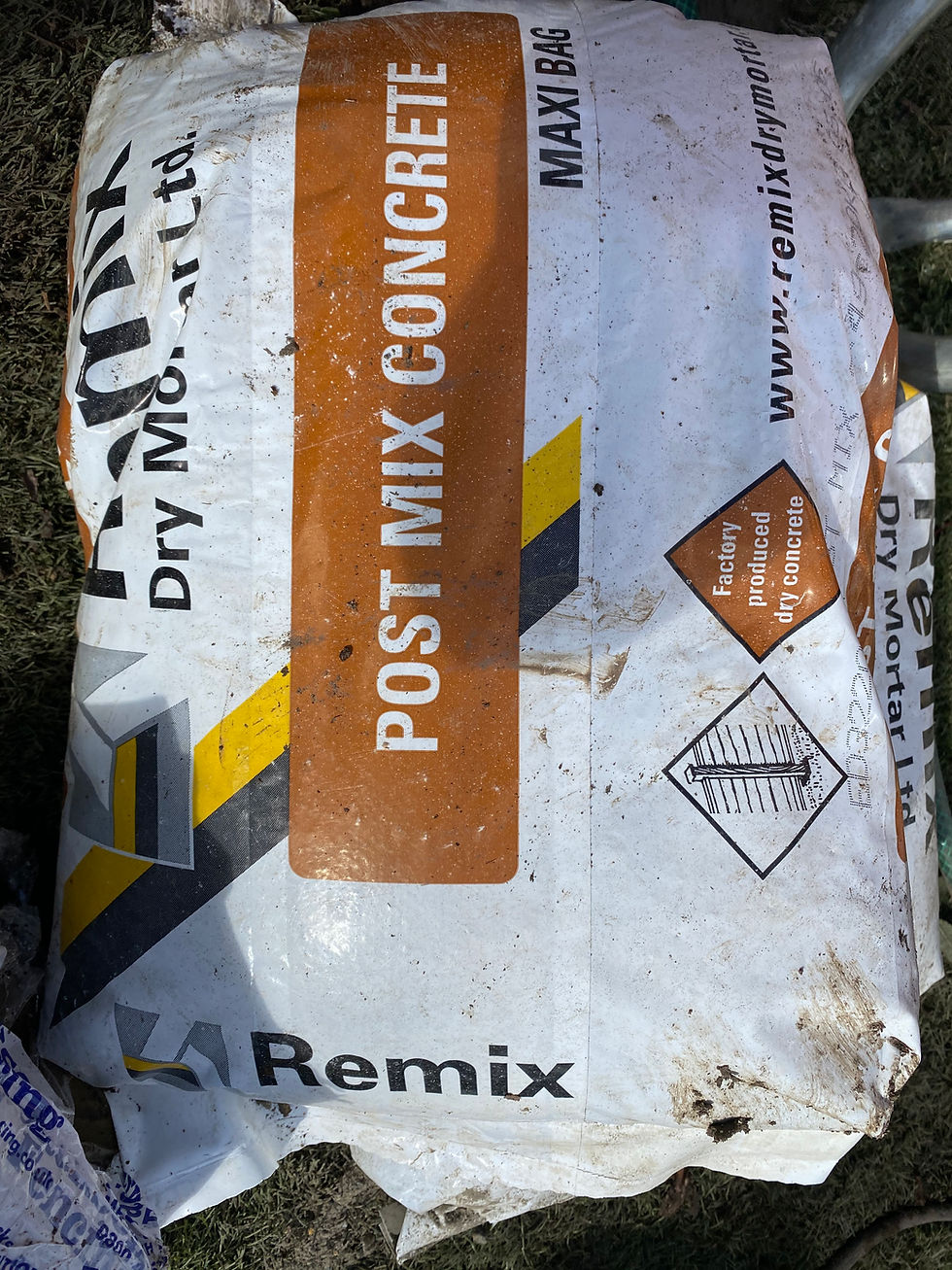Step by step guide to erecting fencing
- megan6018
- Nov 7, 2021
- 3 min read
We have been doing a lot of fencing in recent weeks.
One of our favourite types of fencing is Canterbury Combi Slatted Fence Panels, a good quality but not cheap product.
Taken from the suppliers details the fence is described as:
"Expertly handcrafted, Canterbury Combi fence panels and garden gate designs are a hybrid of two popular products: Venetian and Tongue and Groove combined to create an elegant design. These panels provide the sleek modern feel of Venetian, but they have the added benefit of extra privacy and protection that some people may prefer, with the solid Tongue and Groove Effect lower part of the panel. The top quadrant of the Canterbury Combi panel is finished with our Venetian topper to give these premium solid panels a contemporary finish. The individual slats are planed, however please note the slatted pale spacing is different on these panels when compared with a standard Venetian panel."
SPECIFICATION
Lower section is 1490mm high, made from premium Tongue and Groove boards
Upper section is 340mm high, horizontal Venetian pales
Side framing is 51mm x 45mm
Top and bottom framing is 70mm x 51mm
Rail between lower and upper sections is 51mm x 45mm
140mm gravel board to be included
Guaranteed for 25 years
Step 1
Assess the site and work out a plan.

Step 2
Take down the old fence, we like to use a chainsaw to cut the fence panel first, as this makes it easier for handling the old panel.

Step 3
If you are replacing the posts, take out the old posts. In this case, we took out the concrete post.


Step 4
Put up the line level.

Step 5
Level out the ground where the gravel boards are going.

Step 6
If you are attaching to a wall, you will need to attach a piece of timber to the wall first rather than a post, as the post will not attach properly otherwise.

Step 7
Measure where the first hole is going to go. When you purchase the type of fencing you are using, you will know how long the panel is and therefore where to start digging the hole. To dig the hole, we use two types of equipment, a strong metal pole and pole diggers. When you dig down, you will need to go 600 - 750mm to secure properly. The exact debth depends on ground conditions.
Step 8
Put in the post loosely without securing to start with.

Step 9
Put in the gravel board and panel, and screw in once in the correct location.

Sometimes we need to use two gravel boards. This picture is from a different job where we had to do this.

Step 10
Add Postcrete or equivalent to the post to secure the post.

Step 11
Once dried, level off the soil either side of the gravel boards and around the post. Then
repeat the process above on the next panel and so on until you have finished.
Step 12
We add cloaking to this supplier's fencing. Cut to size. Secure onto the fence. Fence top capping can be added too; which in the picture has not yet been secured properly.

Step 13
Clear up, clean all tools, take the line down, put all tools away.
Step 14
You have yourself a new fence.
Step 15
Remember, if the company have given you a guarantee to register this.
Alternatively, if you would like to get a quote for us to do your fencing, please do give us a call on 020 3897 8422 or email info@stephencharleslandscapes.co.uk
Many people do not realise exactly what is needed to do their own fencing, and sometimes having a professional in makes sure that you get exactly what it is you are trying to achieve. Starting something, only to call in the professionals afterwards, can actually be more costly if you get it wrong to start with.
For information on types of fencing please visit https://www.stephencharleslandscapes.co.uk/post/fencing


































Comments